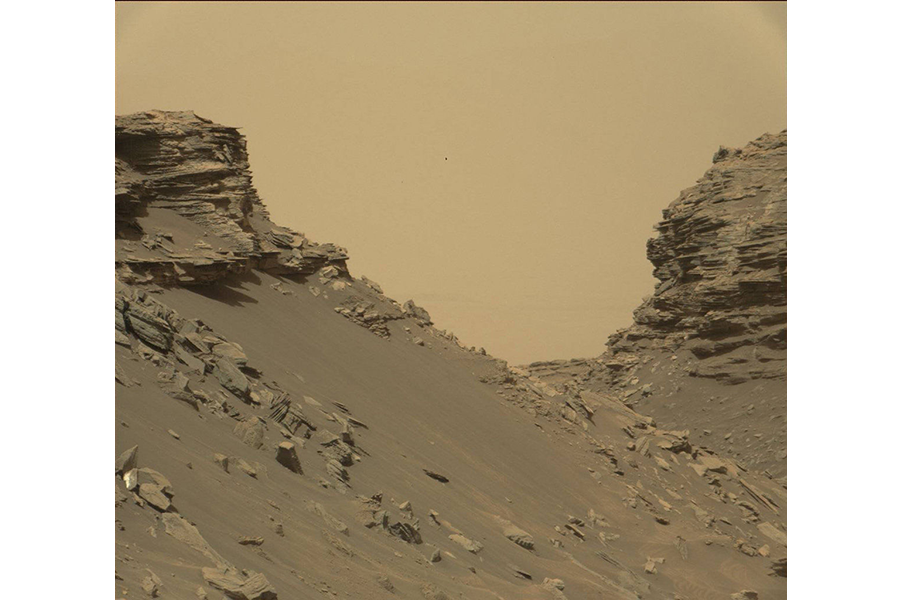Mars looks surprisingly like the US West in spectacular new photos
Loading...
Curiosity has shared its latest photos of Mars, offering us another glimpse into the rover's adventures on the Red Planet.
In photos taken last week, the tall, layered rock formations in the Murray Buttes area bear resemblance to national parks in the American Southwest. Their beauty is striking, but scientists say these rock formations at the base of Mount Sharp also offer clues about the planet's geological history.
"Curiosity's science team has been just thrilled to go on this road trip through a bit of the American desert Southwest on Mars," Curiosity Project Scientist Ashwin Vasavada, of NASA's Jet Propulsion Laboratory in Pasadena, California, said in a statement. "Studying these buttes up close has given us a better understanding of ancient sand dunes that formed and were buried, chemically changed by groundwater, exhumed and eroded to form the landscape that we see today."
The rover had spent a month studying Murray Buttes (named for Bruce Murray, the former director of NASA’s Jet Propulsion Laboratory) before continuing its journey up the 3.4-mile-high mountain. A butte is an isolated hill with steep sides and a flat top, similar to a narrow mesa.
"The buttes and mesas are capped with rock that is relatively resistant to wind erosion," NASA wrote in a press release in August. "This helps preserve these monumental remnants of a layer that formerly more fully covered the underlying layer that the rover is now driving on."
The Curiosity rover, which celebrated four years on Mars last month, has significantly expanded scientists' understanding of the Red Planet since landing in 2012. As The Christian Science Monitor's Christina Beck wrote at the four-year anniversary:
It didn't take long for Curiosity to get to work. The rover experienced its first breakthrough discovery soon after it landed in 2012: Located near its landing site in Gale's Crater was an ancient lake and stream system. Not only did the system offer evidence of a body of water, but Curiosity also discovered hints that the planet once had conditions conducive to microbial life.
After exploring its landing zone, Curiosity took its mission on the road. The rover traveled five miles across Mars' dusty surface to the slopes of Mount Sharp, a three-mile high mountain in the middle of Gale Crater.
Since beginning its ascent up Mount Sharp in September 2014, the rover has discovered further evidence that Gale Crater was once home to a body of water: a thick layer of mudstone, similar to the sediment found at the bottom of lakebeds on Earth, which indicates that a lake could have been there for millions of years.
Curiosity will now make its way further up the mountain's rocky terrain in search of more clues to uncover the mysteries of Mars. The rover's mission was extended two years after its initial mission period ended in 2014, and scientists say they hope to continue Curiosity's exploration indefinitely.






